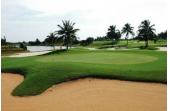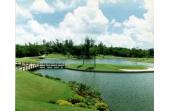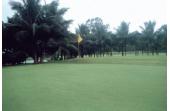The city of Haikou is situated at the northeastern end of the slightly
southwesterly-northeasterly oriented island of Hainan . Haikou became the capital of Hainan and a prefecture level
city – as well as a Special Economic Zone – when the island was
made into a separate province in 1988. Prior to this, Hainan Island
belonged to Guangdong Province on the mainland, across the Hainan
Strait from Hainan Island. Haikou, which means "Sea Mouth", is also
the island's hub in every respect save at least one: the city
of Sanya , situated on the almost diametrically opposite southwestern
end of the island, is the island's prime tourist resort.
That said, Haikou is not lacking in charm, even if it is not
sourrounded by mountains and even if its temperature is marginally
cooler than that of Sanya (the key word here being "marginally" –
the spread in average temperatures between the two cities is only
2-3 degrees). Haikou is better known as "Coconut City", thanks to
the many elegant coconut trees (coconut palms) that line the
streets of the city, and which abound everywhere, providing the
city with a picturesque touch.
Haikou has a relatively long, uneventful ancient history, with a
more eventful recent history, like the rest of Hainan Island, as
the next section illustrates. This is to say that although the
island became a part of Imperial China early on, i.e., during the
Western Han (BCE 206 – CE 009) Dynasty, the island remained pretty
much unheard of, except for the its role as a place of exile for
disgraced public officials and artists (writers, painters, poets,
etc.) who ran afoul of the Imperial court, though sometimes such a
banishment was more an act of factional rivalry than based on
factual circumstances (persuading the emperor to banish a public
official or an influential artist who was critical of one's faction
at court was a convenient way to appropriate said official's
property, to silence the opposition, or to settle old scores, as
the case may be).
Another historical event on the island was the retreat of many of
the indigenous peoples to the mountainous southwestern part of the
island in the face of the influx of ever-increasing numbers of Han
Chinese immigrants.












